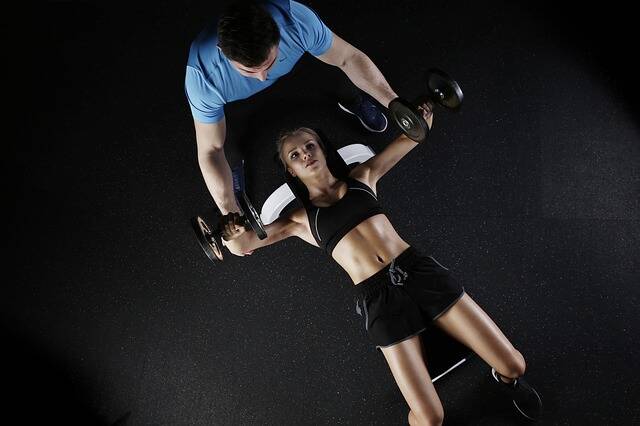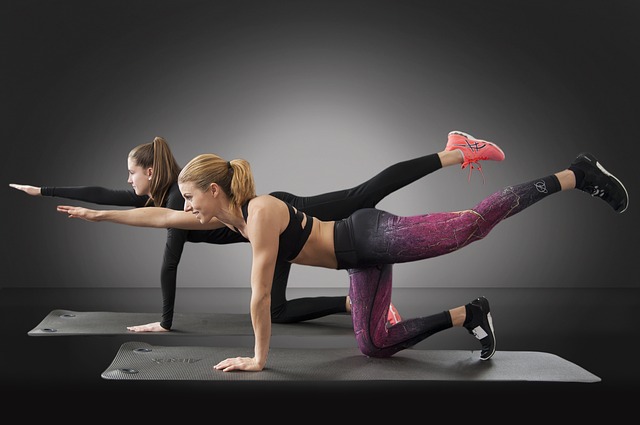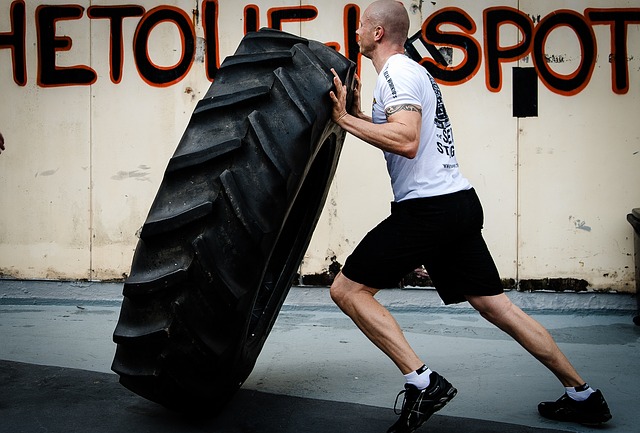Create your own training plan: how to start exercising?

How to start exercising and how often to exercise? This depends on several factors. However, everything ultimately depends on your own decision and willpower. Give your body the time it deserves. It will definitely pay you back and you will feel better not only physically but also mentally.
Article content
How to start exercising, but also how often do you need to exercise?
How much time should be spent on increasing physical fitness?
Many things are important in fitness training or simply in any exercise. And people ask a lot of questions.
What to exercise?
How often to exercise?
When to exercise?
Why exercise?
The body's adaptation to exercise
Adaptation refers to the internal process of the body adapting to various external stimuli. This includes physical stress.
The term adaptation is used to express the state of training of the organism. When loading and using the functional capacity of the organism, we distinguish between positive and negative adaptation.
Positive adaptation brings about the development of abilities and negative adaptation reduces the performance of the organism. Positive adaptation and properly controlled loading of the organism improves the effect of the training process.
The training process is followed by the transition from the initial to the pre-planned state. To achieve this, the development of a training plan helps.
The action of training stimuli induces changes in the organism, i.e. adaptive changes. Homeostasis, the stability of the internal environment, is deliberately disturbed. The organism tries to maintain it under all conditions and therefore activates the appropriate functional mechanisms that lead to its stability.
By regularly disturbing the stability of the internal environment, the organism adapts to these changes.
Stresses on the organism
In order to create the conditions for effective adaptation, it is necessary to observe the laws of loading.
The effectiveness of adaptation processes requires a smooth and gradual repetition of training stimuli. Furthermore, an optimal ratio between loading and rest is required. Equally important is the alternation of the volume, intensity, complexity and mental intensity of the loading of the organism.

Variable stimuli are effective. Therefore, after 6-8 weeks of carrying out the same load composition in training units, they lose their adaptive power, i.e. effect. The reason for such a state is "habit".
This state does not have to occur if the content structure of the stimuli changes.
During training in the rest phase, catabolic processes occur.
These are processes where more complex substances are broken down into simpler ones. These are then excreted out of the body because they are harmful to the body. During this process, energy is released which is used in the opposite (anabolic) process.
An example of anabolism is muscle formation. This is also true in terms of longer training periods. That is, not only when performing a particular exercise, but also a training unit or an entire training period.
The aim of this process is to protect the organism from exhaustion.
Hence, after loading, compensatory processes reach an increased level from the initial state. This adaptive capacity of the organism is called supercompensation. It is the ability of the organism to create a new equilibrium state after its previous disturbance by an external influence, in this case a training stimulus.
When, how much and how often to exercise?
The effectiveness of the development of individual skills requires an ideal regularity of training loads. We provide some insights into the dosage of loads.
Low training stimuli of 70% or less of their maximum load capacity in trained athletes and 20% or less in beginners only maintain the body's basic biological functions. No increase in performance occurs during such loads.
Too high and intense training stimuli have a negative effect on the organism. Overtraining occurs. Performance thus decreases.
The ideal training stimuli are those that take place at the peak of the supercompensatory state induced by the previous stimulus. Such loads ensure the development of performance. The intensity of this stimulus is above 20% of the maximum load capacity of the organism in beginners and above 70% in trained individuals.
The organism responds not only to the intensity but also to the frequency of the stimulus. If training stimuli do not reach a frequency of at least 3 to 4 per week, performance does not increase.
At high frequency, if additional training stimuli are implemented during high fatigue, a decrease in performance follows. This occurs, for example, after a certain training failure or when doing two-phase training.
The ideal stimulus frequency is when the additional load is realized at the peak of the supercompensatory process. Then the organism's performance increases.
The intensity and frequency of the stimuli must be in accordance with the volume of the load on the organism.
How to create a training plan?
It's not complicated. The main condition is to have a goal. That's the most important thing.
Of course, someone will say that it's enough to run for fun. That's great. Go ahead. That's enough too. Enjoying the exercise is also a good goal. Not everyone manages to achieve it. So here too you need to feel motivated. Not to mention the beneficial effects of such running on the human body.
However, when doing it, you also need to follow certain principles to really enjoy it.
The goal is important
The most important question to ask yourself before creating a training plan is:
What do I want to achieve?
Everyone needs to know why they want to exercise.
I want to get stronger, faster, more agile.
I want to lose weight.
I want to feel better.
I want to look better.
These are all desires that drive us forward. Desires that motivate us. Not meeting our own expectations of ourselves. Or just stepping into our own conscience and realizing that we've been doing something wrong.
Identify your goal and put it first. That will be your motivator. Your mantra to tell yourself when you may be uncomfortable on the way to achieving it.
The patience the rose brings
The next question to ask yourself is: How long do I want to take to achieve that goal?
Here's a crucial thing to keep in mind.
Be realistic. Don't put impossible limits in front of you. If you don't meet them, you may be demotivated. And that's only because you've given yourself an unrealistic time to meet your goal. Even top athletes didn't get to where they are in a matter of days or weeks or even months.
Now, we don't want to discourage you. You just need to remember that time plays with you if you are realistic and patient. It takes time to develop any physical ability.
Basically, the body's adaptive changes to a certain type of load take 6 weeks. This is approximately the time it will take to develop a certain ability or increase it.
How to achieve a given goal?
You need to have a goal and the patience to achieve it. Knowing what you want and for how long creates room for you to find a way to get there.
It depends on what physical trait you want to develop. Endurance, strength or speed? There's a recipe for everything.
Even to exercise just for fun or for a better figure. But even here you need to follow certain principles. Not to mention that the figure begins to take shape with any kind of physical activity. But an important factor to achieve the goal is regularity and effort.
Those who want to, look for a way. Those who don't, look for a reason.
Training plan
We create a training plan based on goals. Long-term or short-term. Its basic building blocks are training units.
From these a microcycle is created, for example a training period of one week. From microcycles a macrocycle is created for a longer training period - for example 6 weeks.
A training unit is actually one given training session. In it, we determine what we will do in the training session. Basically, to develop a certain physical characteristic, at least 3 training units per week are needed. To maintain it, at least 2 per week are needed.
We don't prolong training unnecessarily. Short but intense training is better.
We will create training units for one week. This will give us a weekly training plan. We will specify the exercises, the load (intensity) and the number of training sessions per week (volume).
When creating a training plan, we need to think about recovery. This means that we need to include recovery time.

Combine the weekly microcycles into one macrocycle for a longer period. As written above, the body's adaptation process to load is at least 6 weeks. That's how long one macrocycle could take.
During this macro cycle you can increase the volume or intensity of your training. I stress, increase. If we want to develop skills, we cannot decrease the training load.
If volume is high, intensity is low. If intensity is high, volume is low. In the short term, you can increase both.
It is better to plan everything at the beginning and try to meet the training plan. Then, if necessary, you can only adjust the training according to your own performance. But not to reduce the given goals.
For example, in endurance running training, after a certain period of time you will increase the volume and run 3 kilometres instead of 2 kilometres. Or you will train for 2 kilometres 4 times a week instead of 3 times a week.
If you want to increase the intensity, you'll try to run that 2km stretch in less time. In the gym, you can again increase the intensity of the workout by increasing the weight you do the exercise with.
Developing physical characteristics
The basic physical qualities are endurance, strength and speed or explosiveness.
The development of the basic physical qualities must be followed in the given order and must not be changed in the training process.
First you must develop endurance so that later you can develop strength. You will not be fast until you are strong. So first you must develop strength and then speed. One is dependent on the other.
The order of development of physical qualities:
- Endurance
- Strength
- speed
You can't develop speed without strength skills. Endurance comes first in the fitness training process.
Creating a training plan is not difficult at all and can be quite fun. You will enjoy meeting your goals all the more.
Remember, it's progress that's important, not perfection.
Calorie tables: what are the nutritional/nutrient values of foods?










